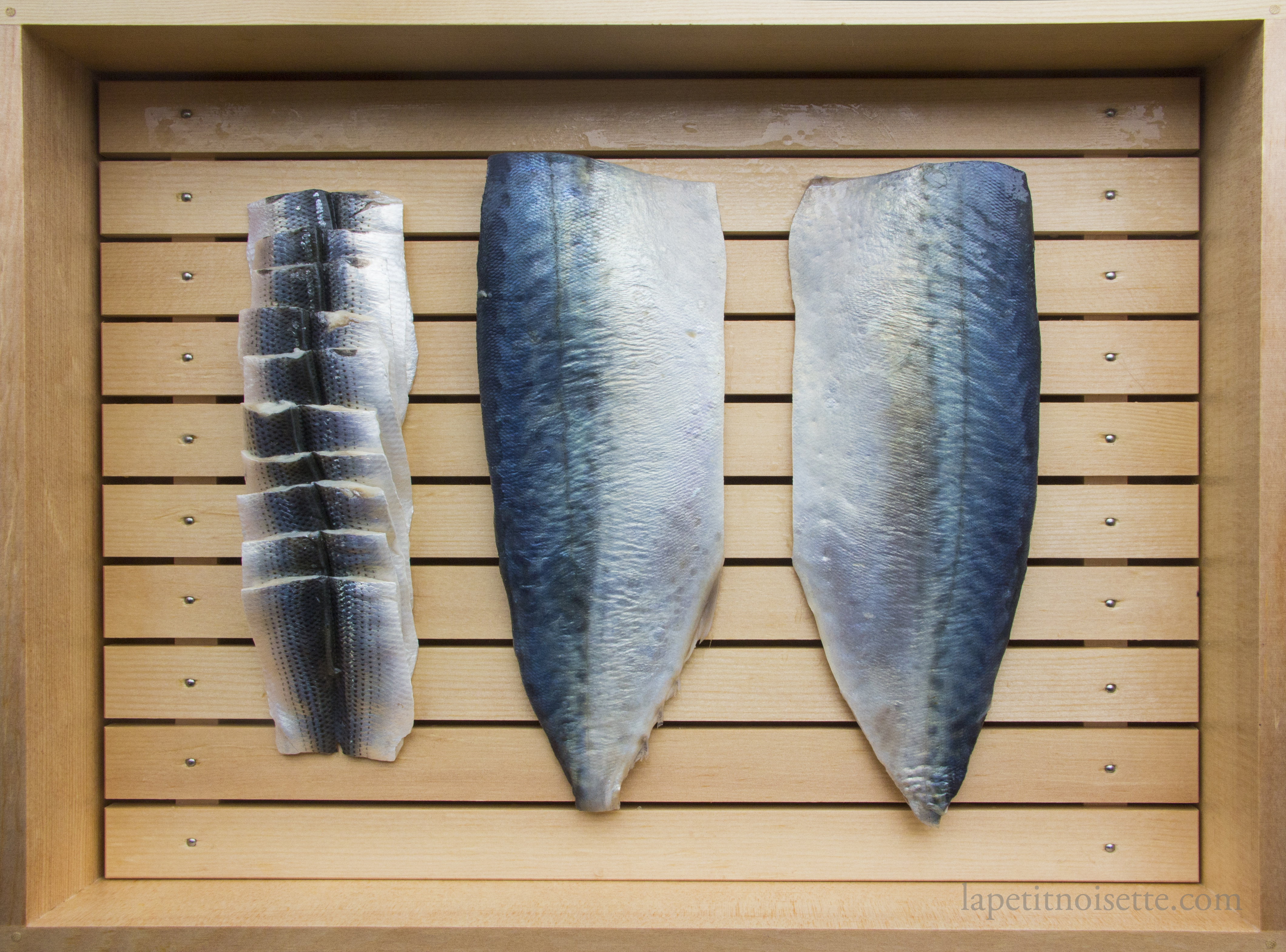
*The content of this article is for information only, not advice or guarantee of outcome. Never ignore professional medical advice, diagnosis or treatment because of something you have read on this site.
After much deliberation, I’ve decided to write an article on how to choose fish to use as sashimi if you live outside Japan, how to judge the various risks for yourselves and how you can ultimately manage those risks so that you can eat it without the fear of parasites or food poisoning.
The information below is solely based on my experience working as a professional sushi chef at a three Michelin starred restaurant in Japan coupled with the various information available on the internet that I have evaluated using the knowledge I gained whilst studying biology at Oxford University.
If it gives you any more confidence in the information here, I personally have been buying fish to eat as sashimi in the UK, France and Australia over the last 10 years and have yet to poison any of my guests or myself so long as I follow the information here carefully. This article is going to be a long one as I want it to be extremely comprehensive and cover all aspects of the topic. If you have any more questions, leave them in the comments below and I’ll answer them as soon as possible.
How do I choose fish that is safe to eat raw?
If there’s one thing I learned from studying biology, everything has parasites naturally, even parasites have parasites so we’re going to have to get used to that fact and the goal here is to minimise the risk of parasitic infections.
When it comes to almost all parasitic worms in the body, especially the most common parasite in saltwater fish- anisakis worms, they live in the guts, intestines and stomach of fish, and their whole end goal is to reach their final host organism, which typically are marine mammals like whales, seals or dolphins. These end point organisms are called definitive hosts in biology, and are where the parasite grows into its final stages and starts to reproduce.
These parasites are happy to live inside the internal organs of the fish until they’re eaten by a marine mammal (which is their definitive host) and this is where things get interesting. Once the fish is killed and consumed by a definitive host, let’s say a dolphin, the temperature of the whole fish starts to rise to that of the dolphin due to the fact that the body temperature of a dolphin is higher than a fish. This means that sooner or later, the temperature of the internal organs of the fish also rises as it gets digested.This acts as a signal to the parasites that it’s time to leave the fish and infect the dolphin to start reproducing, and so they start to work their way out the fish into the stomach of the dolphin.
This leaves us with 2 key ideas here:
- The parasites are fairly happy living in the low temperature environment of the fish’s internal organs, and
- The parasites start to move and try to leave the fish’s internal organs when the temperature starts to rise.
If you want to keep one piece of information from this site in mind when making sashimi, this is it.
This in short, explains 90% of what we need to know when choosing fish for sashimi. To explain, so long as a fish is kept cold from the moment it is caught to the moment it is gutted and cleaned, even if it does have parasites in it’s internal organs, it is safe to eat raw because the parasites have not entered the flesh of the fish which we eat raw. The moment the fish starts to warm-up to room temperature however, the parasites start to leave by any method they can, sometimes burrowing and digging into the flesh of the fish. If we consume such flesh raw, that’s when we get a parasitic infection from eating raw fish.
The maintenance of a cold environment from the point of catching to the consumer is of crucial importance in the food industry and is known as the cold-chain. It’s not only relevant for raw fish but all sorts of perishables, from milk to the transportation of covid-19 vaccines. This is because at any point the cold-chain is broken, the negative effects are felt: the milk goes sour, the covid-19 vaccine becomes unstable or the parasites leave the internal organs and burrow into the flesh of the fish.
Even worse is when these parasites are consumed by humans as our stomach environments are different from that of marine mammals and thus they will also try to leave in the same way as they try to leave fish that have been eaten, by digging into the flesh surrounding your organs, which is when the big problems occur to the human body.
The best way we can ensure our fish is safe to eat as it contains no parasites is by buying fish where the cold chain is not broken, and gutting and cleaning the fish as soon as possible. There is another factor, bacterial growth, that will be covered later on, but this factor is the most important one. This leads us to the next question:
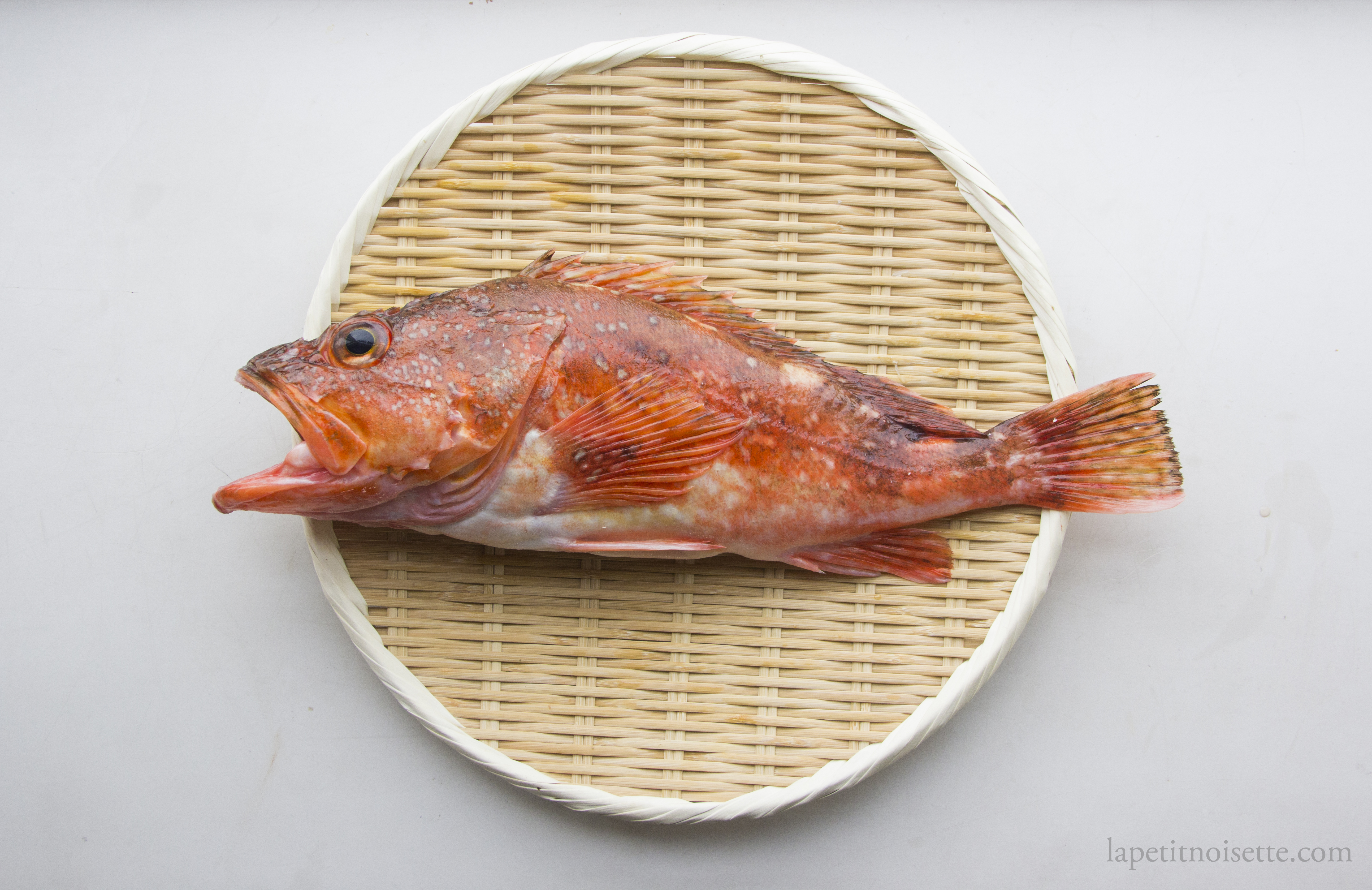
Can fresh fish be eaten as sashimi?
The answer to this question ties straight back to the information above, which is that the fresher the fish just means that it has had less of a chance of having warmed up or broken the cold chain, and so there is less risk of parasites in the flesh of the fish. Think about where you’d get the freshest fish? Either caught yourself, brought straight off the boat or from a wholesaler. In all these situations, the fish hasn’t been transferred through the hands of an intermediary seller, or through the back of a truck to the fish shop and handled by the fishmonger etc. Because the fish has remained cold, the parasites would have remained dormant and there would have been little opportunity for the parasites in the fish to have escaped into the flesh and would be safe to eat raw. It’s not that fish from reputable fishmonger can’t be eaten raw, it’s that the probability that someone somewhere along the line made a mistake and broke the cold chain is just higher, e.g. didn’t add enough ice to the box or left it out for a while whilst waiting for the delivery van. Therefore, it is of utmost importance that you learn to judge the freshness of fish if choosing your own fish to eat raw/as sashimi.
It’s not that freshness is important for fish designated to be eaten raw, it’s that fish goes bad quickly when not cold, and unfresh fish is a sign that the cold chain was broken somewhere along the line. Even my site has information on how to age fish for sushi and sashimi, making the fish far from fresh when it is served, but that is after the fish has been cleaned and gutted and so any parasite risk has been removed.
Of course if the fish is going bad due to being kept for too long, you’d still get sick from eating bad fish because of bacterial growth in the same way you’d get sick from eating expired food, even if the fish is parasite free.
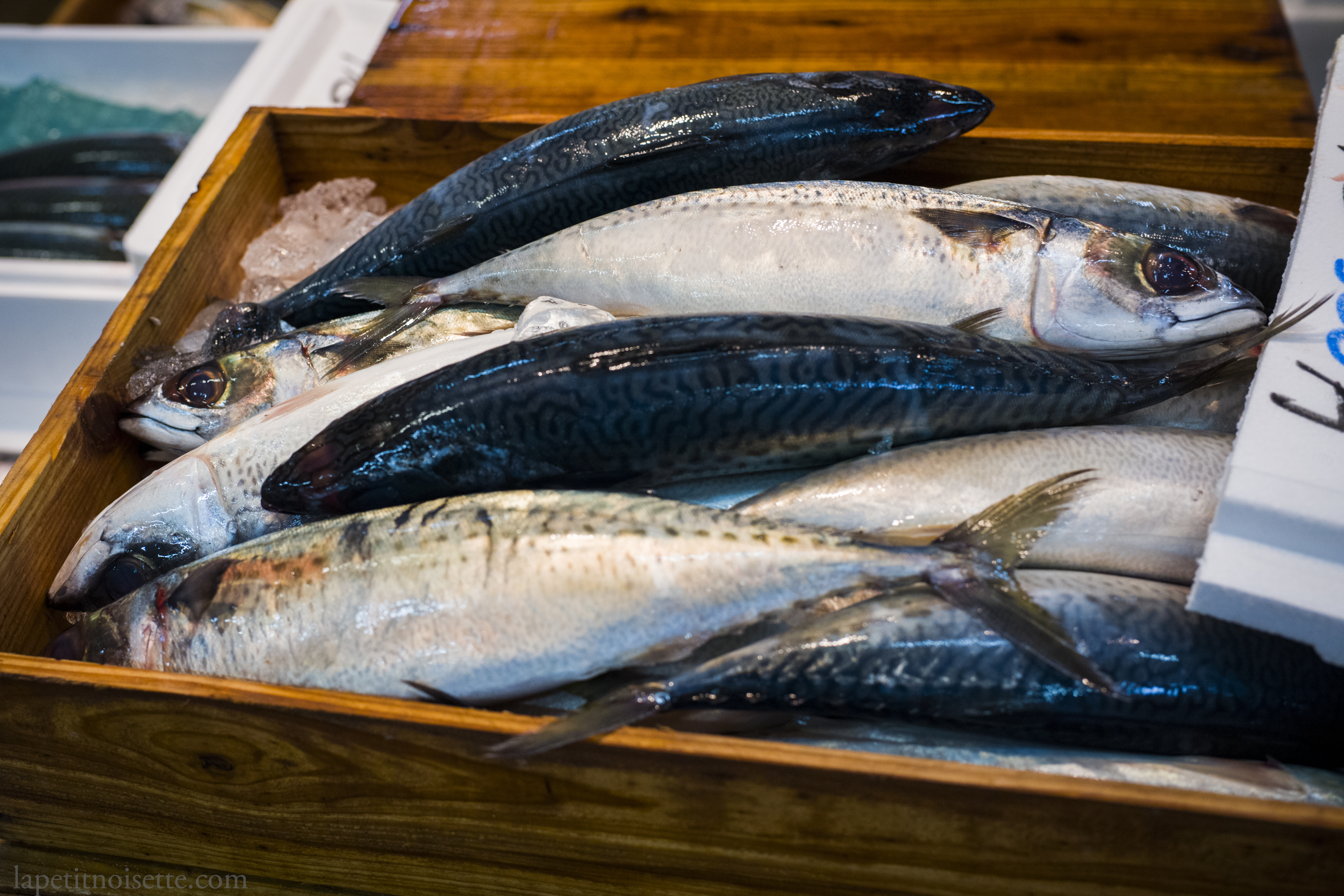
Why is fish in Japan safe to eat raw?
The truth of the matter here is that fish in Japan is just as safe to eat raw as it is in any other country around the world if you’d compare fish caught straight out of the water. The reasoning behind why people in Japan eat raw fish so confidently is actually due to the entire supply chain that has grown around the vast demand for fresh fish that can be eaten raw in Japan. Whilst almost all fisherman and fishmongers have the necessary training to kill fish using the ikejime method, not all fish are dispatched that way but they also have the infrastructure in place to quickly transport fish throughout the entire country. The impressiveness of this system was greatly displayed during the pandemic when all the high end restaurants were able to send meal kits containing raw beef, chicken, eggs and fish all around Japan that customers could assemble at home.
The restaurant industry in other countries suffered much more than Japan because there wasn’t such a system in place already and it would have been impossible to build one from scratch. Look at any of the main fish markets in a Japanese city and you’d find examples of live fish living in tanks that can be killed on demand and gutted, ensuring that the fish is parasite free. Whilst other countries do have systems like this, such as live fish in tanks that you’d see in chinese restaurants in China, Hong Kong, Singapore and even the UK and US, they usually contain the same few species of either freshwater fish, grouper, crab and lobster that are easy to keep alive in a tank. Only in Japan will you find tanks of a variety of live seawater fish, from tai to hirame to various kinds of shellfish.
Korea, of course, does come a close second. Because of the expectation that fish can be eaten raw in Japan, a whole system has come to grow in the country that ensures fish can be eaten raw safely. Given their extensive history in eating raw fish as well, they have developed the knowledge regarding which parts of the ocean contain fish that have less parasites and which parts of the ocean should fish not be eaten raw. The same goes for the local species of fish. Other countries most likely do have fish that can be eaten as sashimi that’s not only safe but also delicious, but the knowledge and supply chain just does not exist.
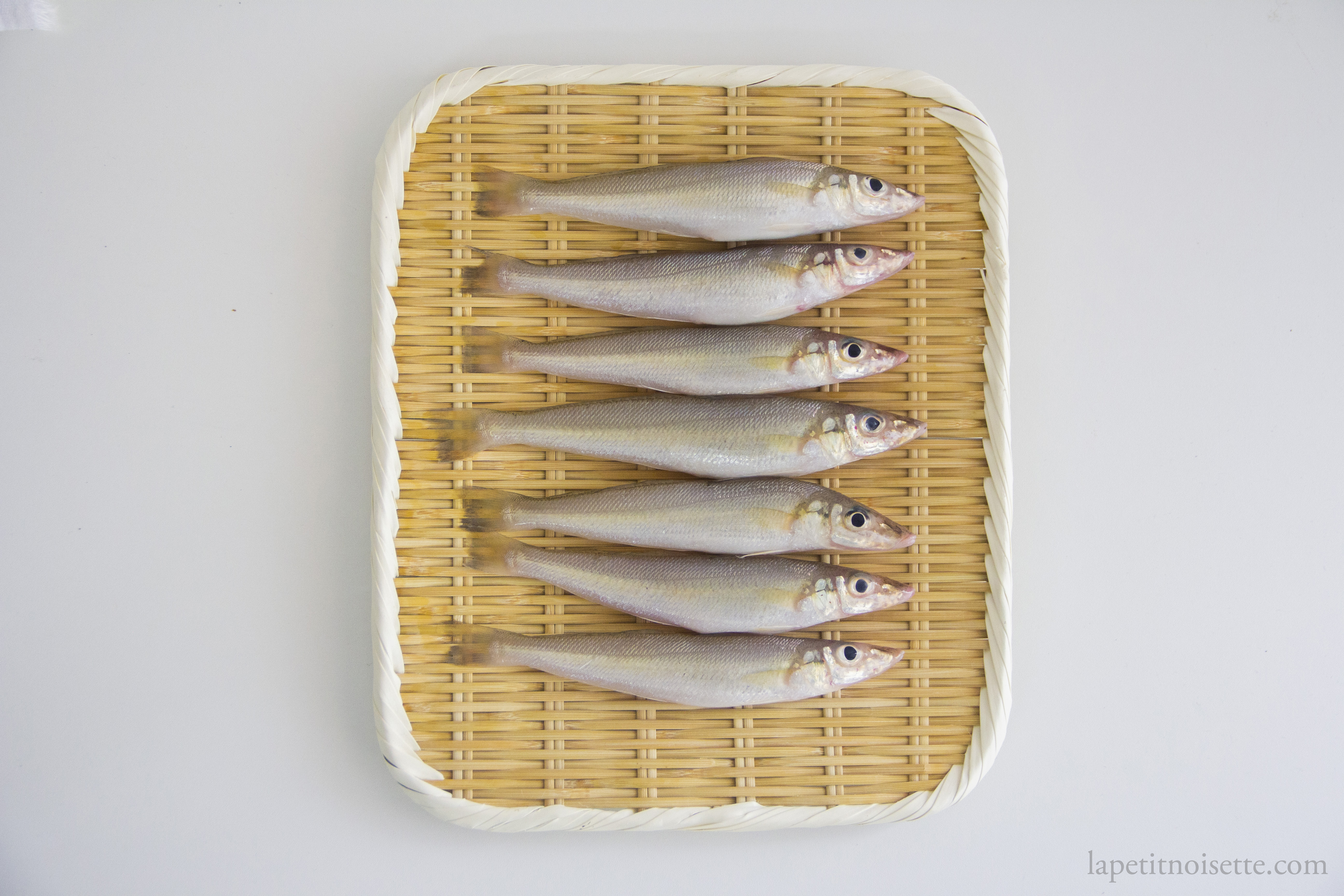
Is farmed fish safe to eat raw/as sashimi?
This is actually where careful observations of your surroundings can be very enlightening. Go to any large chain sushi restaurant and you’d find 4 types of seafood usually served: shrimp, tuna, salmon and yellowtail. The shrimp is always cooked so that rules out any parasite problems. Tuna, it’s different varieties and most of its related species such as bonito, bluefin, yellowfin and bigeye, historically have not caused problems when eaten raw and therefore tend to be treated as safe to be eaten raw. How about salmon and yellowtail? These two fishes are popular to serve in big chains because they’re typically farmed and so are plentiful in supply.
These fish are parasite free because of the extremely high amount of antibiotics used when raising them, and as with all antibiotics used in livestock such as cattle and pigs, it is extremely damaging to the environment in terms of increasing antibiotic resistance. This however, is not the main point of discussion of the article and won’t be covered in depth. This lack of parasites usually means that the farmed fish are safe to eat as sashimi and are sold as such.
But, not all farmed fish is deemed as safe to eat raw as per the laws of the countries it’s farmed in as they typically require not only the fish to be parasite free but also conditions in which it is gutted and cleaned to be of a certain hygiene level. So even though all farmed fish is almost definitely 100% parasite free due to farming standards, not all of it is deemed safe for sashimi because of the risks involved.
If you’re a specialist sushi restaurant, you’ll have the supplier, knowledge and expertise that will allow you to serve a variety of fish raw. A big sushi chain restaurant will never take such a risk and so they’ll always stick to fish that is high in availability and guaranteed safe, to make their life easier by standardising it across all their various franchises. From unagi, octopus, squid, egg and octopus which are cooked sushi, to salmon and yellowtail which are raw and therefore pose no risk. You’d occasionally find vinegar pickled mackerel on the menu but that’s typically processed in a factory far far away and delivered to the restaurant so it’s guaranteed safe, rather than broken down and marinated in house.
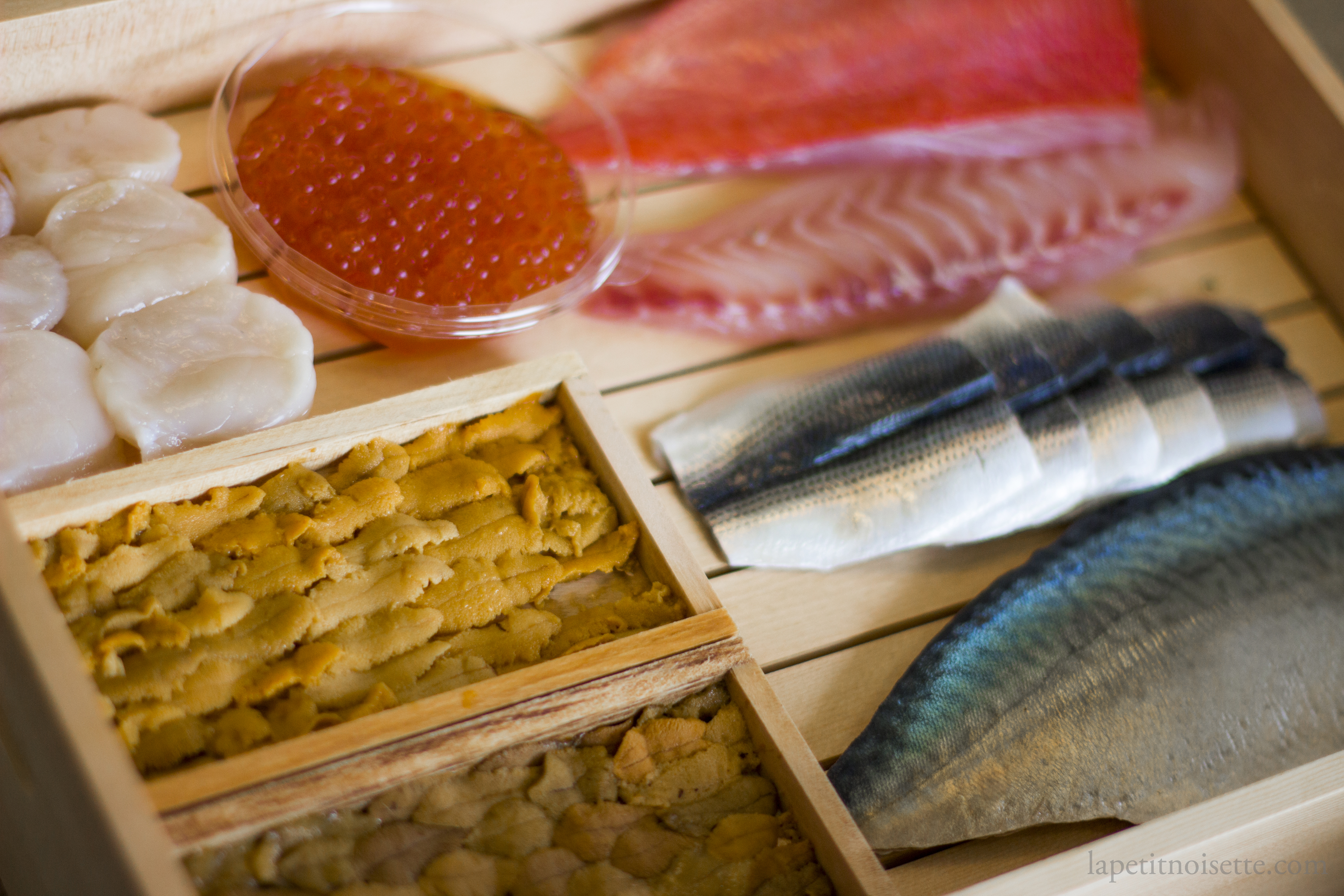
Why is making your own sashimi all about managing risk?
So what’s this management of risk that I keep going on and on about? As stated in the beginning of the article, all fish contain parasites of some sort and whilst certain species such as tuna are known to have far less compared to others, that risk never disappears. There is no such thing as sushi-grade/sashimi-grade fish and if a fishmonger is willing to sell you fish and tell you that it’s safe to eat raw, they’re confident enough in it’s provenance and sourcing to take on the risk of you getting sick. The same goes for sushi restaurants outside Japan. The chefs or owners there do not know for 100% sure that there are no parasites in their fish, they’re just confident enough that the risk of harm from the fish they have is low enough that they dare to serve it to you and take on the responsibility if anything happens.
So if you choose your own fish to eat raw and buy it from a fishmonger, the fishmonger might very well tell you that it’s not safe to eat raw, when the reality is that the risk from getting a parasitic infection from the fish is low enough that it’s safe to eat raw but the fishmonger does not want to take on the risk. I actually have found examples of fishmongers who obtain the same fish from the same supplier, with one store telling me it’s not safe to eat raw and some telling me that it is safe to eat raw.
Some restaurants however do have specialized equipment to freeze their fish, which is the only true way to completely eliminate the risks of food poisoning or a parasitic infection from eating raw fish is to freeze the fish and to quote the temperatures for completeness sake that you can find everywhere on the internet but originate from the US’s Center for Disease Control and Prevention you must freeze fish:
- At -4°F (-20°C) or below for 7 days (total time), or
- At -31°F (-35°C) or below until solid, and storing at -31°F (-35°C) or below for 15 hours, or
- At -31°F (-35°C) or below until solid and storing at -4°F (-20°C) or below for 24 hours.
Your home freezer is not powerful enough to do this and even if it can it’ll take so long to reach a low enough temperature that ice crystals that grow in the flesh of the fish will ruin it’s texture.
Going back to Japan as an example, almost all restaurants are happy to serve you raw fish because the chances of getting sick from eating them are so low due to the system set in place that the restaurants most likely don’t even think about the risks involved. Because of this, freezing fish before eating it raw is virtually unheard of in Japan unless necessary for keeping it fresh. It is never done to eliminate parasites from what I know.
If anything, the recommended temperature for cooking fish so that all the parasites in it are cooked is an internal temperature of 63°C and I can guarantee you that no fine dining restaurant will ever serve you fish at 63°C as it’ll be way too overcooked. Modern restaurants tend to go for a moist internal texture like a medium rare steak of around 50-55°C so the risks of parasite infection from these restaurants are almost just the same.
Therefore, if you’re confident with the risks associated with eating raw fish and you have taken enough steps to minimize the risks, choosing fish to prepare and eat as sashimi at home is about as risky as going to a restaurant. But what does ‘confident’ here mean? That’s a rather hard to quantify term and so the following section will try and make that a little less vague as much as it is hard to define.
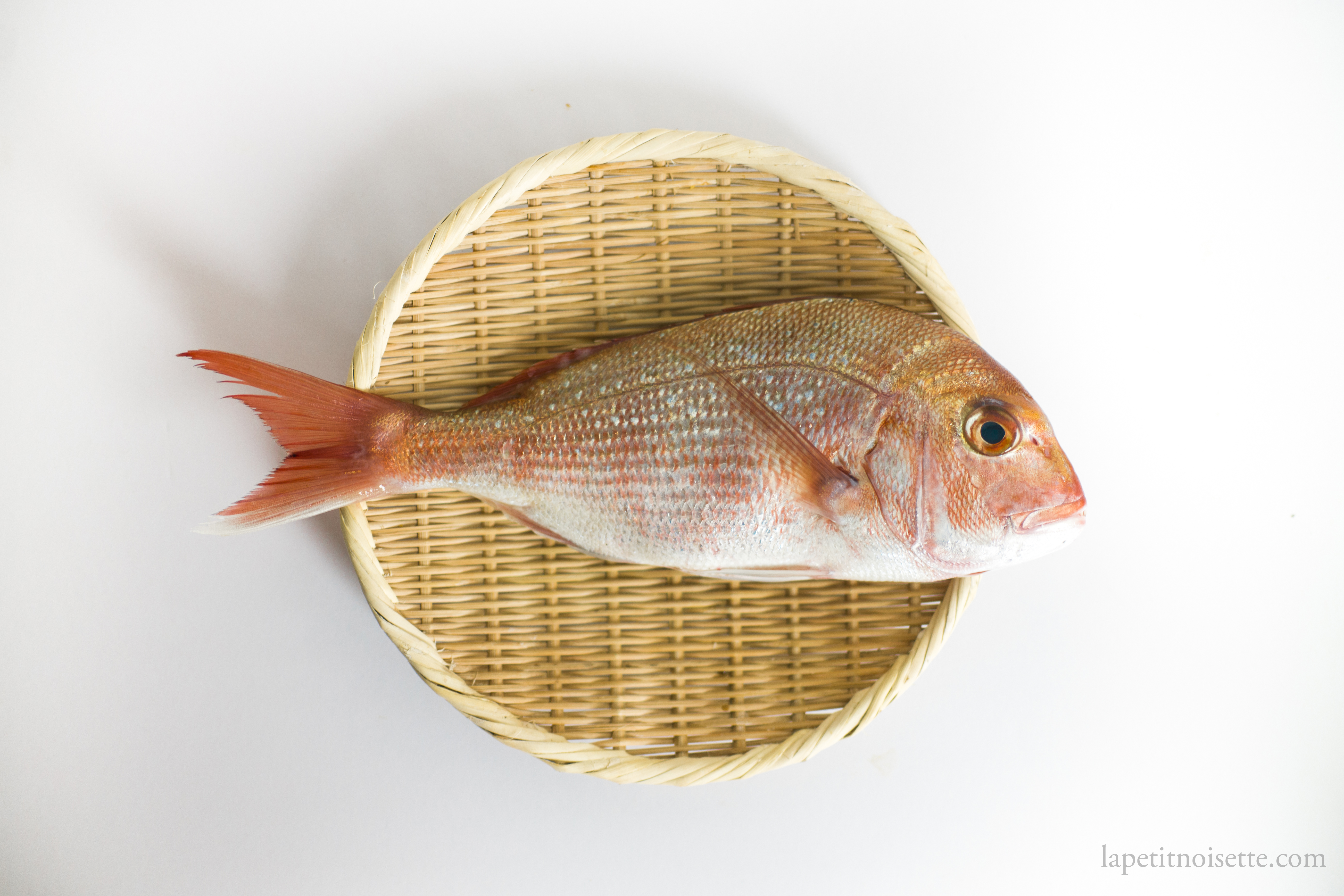
When do I know how to choose fish to eat raw?
I’ve always likened being able to choose fish to eat raw to foraging mushrooms. When I learned to forage mushrooms, we were always advised to never eat what we found until we knew by instinct what it was. For example when searching for porcini mushrooms, you’d find some, take a picture of it and post it online for other more experienced foragers to check and once they’d verified that it was a porcini, you wouldn’t eat it. You’d continue the same process, over and over again, until you could say for sure without a doubt that what you had found and recognised was a porcini, without asking anyone else, before you would consume it. Even when you consumed it, you would keep one mushroom from the batch in the fridge, just in case you needed to go to the hospital you could show the doctor what you ate.
The same applies here with an emphasis on freshness. At first, I would go to a fishmonger, preferably a big market and buy fish that I thought was as fresh as possible based on the following characteristics:
- Clear eyes
- Flesh that bounces back when gently pressed with a finger
- Bright blood red gills
- Smells fresh and of the ocean
- If the fish was coloured, that the colour was bright and not faded
- And the fish stands straight and still is in rigor mortis when held upright, not flopping over.
I would then go home and cut it open and judge the freshness of it. Regardless of the freshness I would then cook it, not eat it raw, and proceed to do so again and again. Buy fish that I thought was fresh, go home, check it and cook it. This was a remarkable learning journey for me for various reasons. For one, unlike in most Asian countries, touching the fish is highly looked down upon in most countries. I’ve been to France, England, Australia, and many other developed countries and the fish is kept behind a glass case. This is for a good reason of course, because having the customers handle the fish can be extremely unhygienic. The only thing I’m against is the racist attitude some of these fishmongers have towards Asian customers (particularly chinese) who are the main group that touches fish to judge its freshness. In reality I’m a big supporter of touching fish to judge it’s freshness as it’s one of the most effective ways to ascertain the quality of what you are buying. What most English speaking countries also claim to be fresh fish would be considered unfresh in some Asian countries. However, when learning how to judge the freshness of fish, I’ve brought fish on the verge of going bad from the Billingsgate Fish Market in London, the Sydney Fish Market in Australia, and the wholesale fish markets in Tokyo, Fukuoka and Kyoto. This of course makes sense, as fishmongers need to earn a living and fish that is no longer pristinely fresh can still be cooked, and those that you would not cook whole by steaming you can still use in a curry with that on the verge of inedibility still capable of being made into fish balls or fish cakes. The idea here isn’t to point at one country or cultural group, but to point out that you can find very fresh fish in all these countries, but you can also buy very bad fish. You have to learn to identify it for yourself. I personally have made mistakes many times whilst traveling around and it is these very mistakes that have honed my ability to judge the quality of fish.
To put it in more everyday terms, imagine walking across a wet floor. Just by walking on the wet floor, you instinctively know how fast you could walk or even run before you would slip and fall. For another example, imagine your partner, be it husband, wife, boyfriend or girlfriend. You’d probably have a gut feeling of when they’re unhappy or angry, even if you can’t exactly pinpoint what gave you that feeling. I would personally recommend developing this level of intuition before judging if a fish is safe to eat raw or not.
As someone who places great emphasis on fact based judgements, I’m in no way claiming that there is some fifth sense in choosing fish that you’ll develop over time. All it is, is practising a skill over and over again until all the cues needed to carry out the task have become habitual and instinctual, just like how a mechanic can tell that something’s not right with a car based on the engine sound, or how a nurse can tell that a baby is sick just from a single glance. If you can look at a fish, or even better touch it, and judge that it is extremely fresh (ideally still in rigor mortis), you’re on the path to choosing your own fish that you can confidently eat raw at home.
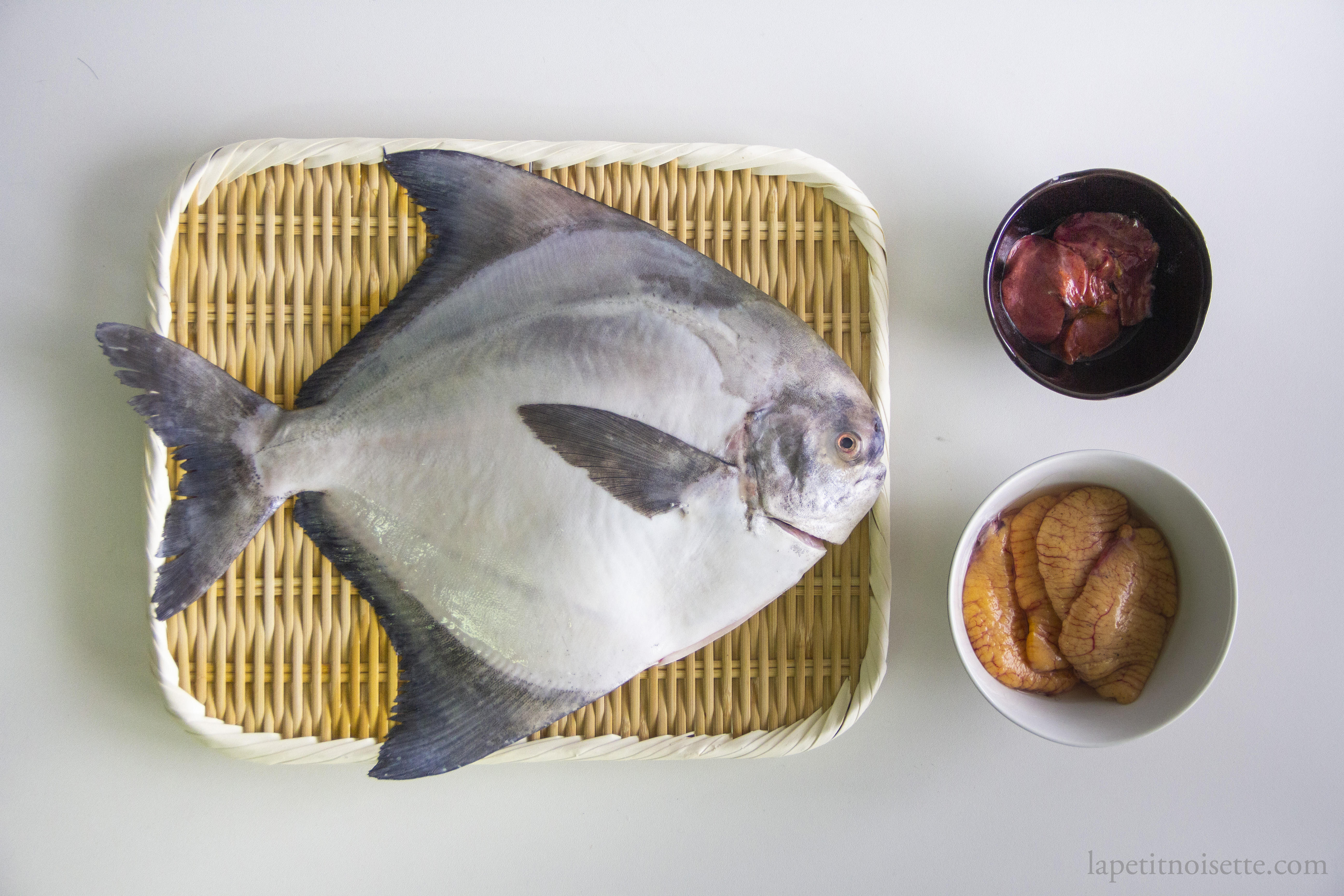
Can I eat freshwater fish as sashimi?
The simple blanket answer for this here is a big NO, as freshwater fish have their own different sets of parasites and considerations which makes it very hard to judge if it can be eaten raw or not. The absence of salt in freshwater means that the organisms that are able to live there are vastly different from that of the ocean and thus it’s hard to apply the information above to it. Even in Japan, freshwater fish is almost never consumed raw with a couple of exceptions, most notably the carp that you can sometimes get at unagi restaurants, even which some people find tastes so different from seawater sashimi that they dislike it. Even fish that are anadromous and live in sea and freshwater at various stages of their life-cycle such as salmon were not typically eaten raw in Japan as the Pacific salmon found there had parasites. It was only through a huge marketing campaign from farmers rearing Norwegian salmon that eating salmon raw gradually became part of the Japanese diet over many years. These fish are farmed and are therefore parasite free. (We’re ignoring the small amount of wild Japanese Pacific salmon that is sometimes eaten as sushi at high-end sushi establishments).
Where do I find and buy fish for sashimi?
If you’re an absolute beginner, I recommend that you go to your local store and ask for either farmed salmon or farmed buri that you can eat raw. With your fishmonger’s advice, you should be able to obtain such fish and be confident in it’s safety. If you want to stray from farmed fish however, and you don’t live in a major city like Hong Kong, New York or London etc, I can guarantee you that no fishmonger is going to tell you that their fish is safe to eat raw, fullstop. They’re not going to take on the responsibility. They also have fish supplied to them, and are usually not the freshest by the time they get to you. If you do live in a big city or fairly developed place, you might be able to find a specialty Japanese store, Asian grocery store, or fishmonger that supplies high quality enough fish for them to call ‘sashimi grade’ (or at least tell you that you can eat it raw safely) which you can eat raw, but it’ll be pricey and is usually already filleted for you.
If you’ve followed all the advice on this article and are going to choose fish to prepare as sashimi without the advice of your fishmonger, I highly recommend ditching your local fish store and either buying from a wet-market, whole-sale fish market or straight off the boat, and keep this in mind: always buy whole fish, not fillets (this will be explained in the next section). If you live by the sea and have the luxury to buy fish straight from the fishermen, good on you. If not, try searching up google if there is a whole-sale fish market or wet-market near you that you can visit, as they usually also serve individual customers as well (like the billingsgate fish-market in London). I emphasise wet-markets because your typical ‘clean’ and dry markets that you’d find in developing countries normally don’t have the freshest fish (like the London Borough market). If you have neither, you’d be surprised by the vast discrepancy in fish variety and freshness that you can obtain from fishmongers or stores that serve asian/ethnic minority communities. Because they sometimes tend to use other platforms of communication such as LINE and WeChat instead of facebook and instagram, they can sometimes be hard to find on google or hard to know about. From my personal experience in London and Australia, the freshest fish that is cheap price-wise, and is also more similar to Japan variety and species-wise, I have found at Asian fishmongers.
If possible, I recommend sticking to varieties of fish that are typically eaten raw in Japan to choose to eat raw outside in your own countries, as those are fishes that are verified to have less parasites (you can find the various species on my website). This means not eaten fishes that are not typically eaten raw, like eel, pollock, cod, haddock etc.
Why should I only buy whole fish and not fillets when preparing sashimi?
The other risk besides parasitic infections when it comes to eating raw fish is food poisoning from bacterial growth. When preparing fish, the principle is the same when choosing meat for steak tartare- you’d want to minimize the surface area of the fish that bacterial growth can occur. When choosing meat from steak tartare, a large piece of very fresh meat is typically used as it has the smallest surface area to volume ratio. Bacteria won’t grow inside a large hunk of meat, but only on the surface. The same goes for fish, if the fish isn’t filleted, it won’t have any cuts into the flesh yet, so the bacteria can only grow on the surface scales which will be removed, or on the skin which is also removed, blanched or blowtorched. The inner flesh of the fish remains bacteria free.
Filleted pieces of fish with their skin exposed that have been allowed to sit in the display case for days have had plenty of time to grow bacteria which is fine if you’re going to cook it, but risky if eaten raw. Fish fillets also tend to be stored in a pile with significant moisture build up, like fillets treated for sashimi that are wrapped in special paper after being dried to maintain their quality. I would personally never eat a piece of filleted fish raw unless it was prepared in a fishmonger that specialises in raw sashimi.
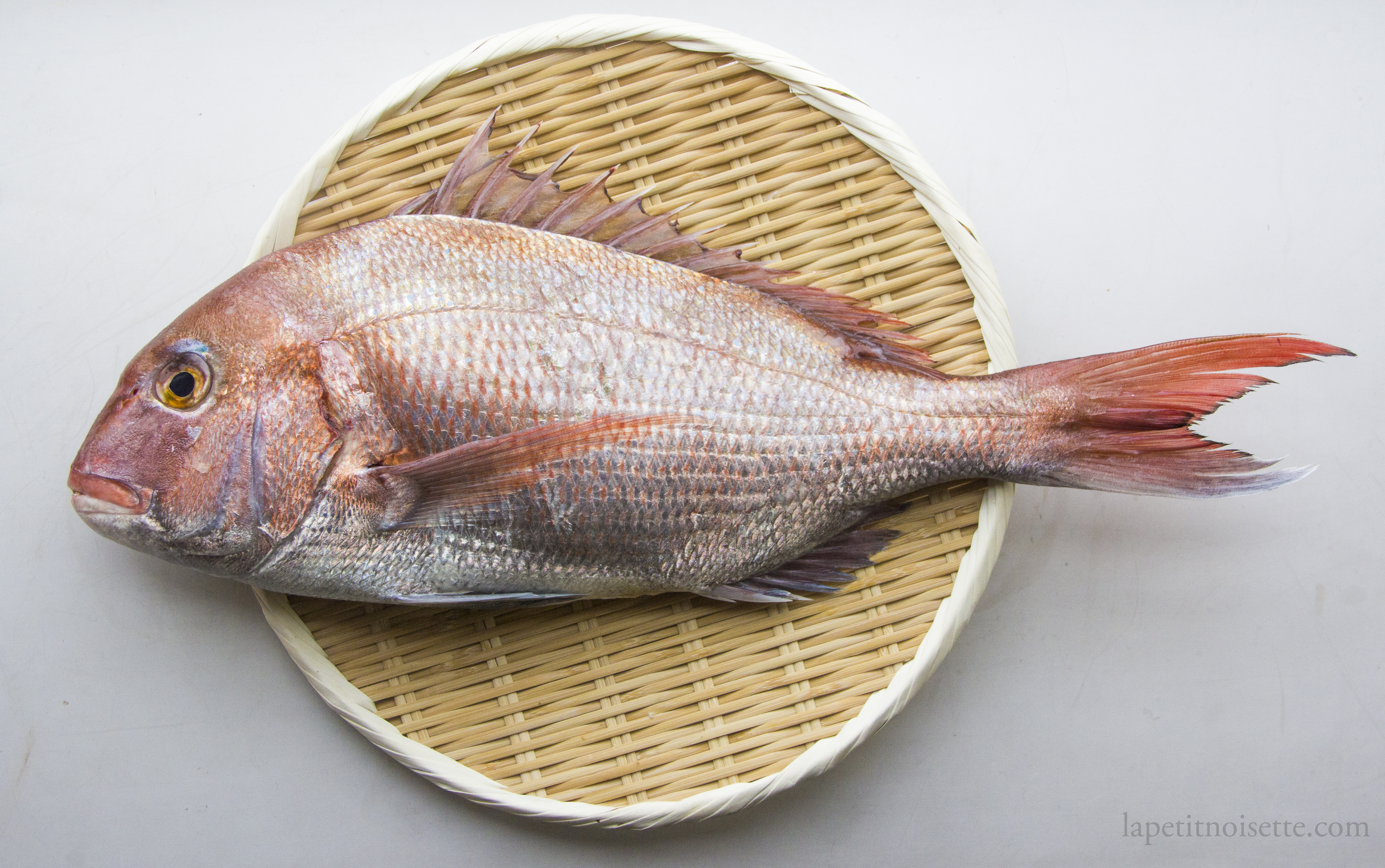
How about gutting and cleaning fish when preparing sashimi?
The first thing to go bad after a fish has been killed are their guts, and if the guts which includes the stomach, intestines, heart and liver go bad, the bitter taste can spread to the rest of the fish and cause the fish to taste bitter and spoil even quicker. This is why fishmongers tend to gut fish (or fillet them) before selling them in the display case, because it allows their product to last longer even if they can’t sell it. This used to mean that if you could buy ungutted fish it was hint that it’s fresh, but fishmongers nowadays know this so they sometimes leave the fish ungutted until you buy it, and gut it upon request, which makes you think it’s fresh, even when it’s quite a few days old.
If you’ve ever gutted a very fresh fish, you’d know that their internal organs don’t actually stink as badly as you’d expect, and that the organs fill up the entire stomach cavity. If you were to gut an unfresh fish, you’d notice that the belly of the fish might be bloated from gas build up, or might appear normal on the outside, but the moment you cut it open you’d find that the organs have shrunk and receded into the cavity, or have become a gooey mess.
The freshest fish have plump internal organs which are not breaking apart and do not smell bad, but can actually be gently handled to the point that you can separate each organ. When choosing fish for sashimi, I’m a big advocate of buying ungutted fish and bringing it home to gut myself for three reasons. Firstly is that I find that fishmongers tend to damage the fish flesh when gutting it as they’re trying to do it as fast as possible, and not as neatly as possible, this makes sense as it pays to process customer orders quickly. Doing it yourself allowed you to hone your skills and train yourself to not bruise the fish. Secondly, it allows you to judge the quality of the fish yourself. If you buy a fish and get the fishmonger to gut it for you, it’s hard to judge the quality of the fish as they’d most likely remove the gills, all the organs and clean it out for you. And I’m not talking about judging fresh vs unfresh here, which you can still tell from the smell and firmness of the flesh, but judging the difference between fresh and extremely fresh, which is what you’re looking for when making sashimi. Lastly, it also means that the only exposed flesh of the fish due to cuts occur within your control. If the fishmonger cuts open the belly and cleans the insides of the fish with his set-up, it might not be as hygienic as your own home’s and who knows if his cutting board, which has gutted countless other fishes before, has bacteria which will contaminate the exposed flesh of your fish. Most fishmongers have clean fish processing areas that are good enough for fish meant to be cooked, but might not be up to standard for fish meant to be eaten raw.
*All this being said, I still do let the fishmonger gut and clean my fish if I intend to cook it.
What are the problems with bacteria when preparing sashimi?
If fish is left at room temperature for too long, bacteria grows on the surface of the fish which produce toxins that can be poisonous when consumed raw (and sometimes even after cooking). Because of this, you’d want to keep your fish optimally at 4°C which is recommended to prohibit bacterial growth. Other than that, bacteria can be transferred from unhygienic work surfaces to the fish, causing the same problems as well. Therefore, the two things to keep in mind when preparing sashimi at home are temperature and hygiene.
At the sushi restaurant I worked at, the temperature of the fish was stored at 0-2°C in the back fridge for aging but at 4°C in the front fridge for fish that was going to be eaten that day. However, you’d be surprised how long we left the fish at room temperature with no ill effects. For example, if the fish was being salt for 30 minutes, and we were working to remove the pin bones from the fillet during that time, taking into account the 10-ish minutes we would take to scale, gut, clean and fillet the fish, the fish could have been sitting at room temperature for around 40 to 45 minutes total. This makes sense, as bacteria doesn’t appear instantly the fish is above 4°C but grows faster and faster as the temperature increases. So at a room temperature of around 22°C, the fish is still safe to consume raw, as long as you aren’t leaving it at room temperature, cooling it down, letting it come to room temperature etc and repeating this cycle. If you repeat this too many times, bacteria will accumulate on the fish as it’s been above 4°C for too long. Taking the fish out of ice to fillet and salt, then chilling it back down and letting it come up to room temperature just before making nigiri out of it is still safe.
Hygiene wise, you’d be surprised how far hot water takes you. Whilst the chopping boards in the kitchen used to fillet fish were washed with hot water and soap, the chopping board at the counter made from solid oak was far too heavy to constantly move around and bring into the kitchen to wash, and making sure that hot to almost boiling water was poured onto it every day and then wiped down was enough for it to never poison any of our customers, whilst also passing a swab test carried out by a health inspector. This goes to say that whilst you need to make sure your tools and equipment are clean, you don’t need to sterilize them with alcohol or chemicals. Simply good hygienic practices such as making sure all surfaces are clean and making use of hot water is good enough.

Can I remove parasites from fish for sashimi?
The short answer is a resounding no, unless you spend a lot of money. As mentioned above, there is no reliable way to do this other than to freeze your fish down to -20°C for 7 days or -35°C. If you do this in your home freezer which can sometimes reach -20°C it’d take so long that the fish flesh will be mushy.
If you salt the fish or marinade it in vinegar like the recipes for kohada, or marinade it in citrus and soy like for kasugo and shima aji, the pH is not low enough to kill bacteria and parasites. The acid levels required to do so are so high that the fish would be too sour to eat. Likewise, you would need so much salt to kill the parasites that the fish would be inedible.
The other famous method known as candling, where you use a torch light or candle to shine through thin cuts of fish to see parasites is not reliable at all either and honestly, if you find a single parasite in the flesh of 1 fillet and remove it, it’s highly likely that there are eggs or parasites you didn’t find and it’s not worth the effort or risk to remove it.
The sous vide temperature required to skill the parasites will cook the fish, so you cannot do it unlike sous vide pasteurized eggs.
What to do when you buy fish home?
So you’ve now brought your fish, what do you do when you bring it home? First of all, make sure your knives are sharp and the work surface is clean and hygienic. I recommend scaling, gutting and cleaning the fish immediately after you bring it back. If you can’t keep it in the fridge or wrapped in a bag submerged in ice water. I recommend removing the gills and guts from the fish as soon as possible and discarding them before cleaning out the fish with an old toothbrush (as done in all my recipes).
After cleaning you want to fillet and salt the fish. After washing off the salt, ideally you want the fish fillet to be dried before storing. If you can get it I recommend using Magu or Rido paper リードペーパー, which is a special water and absorbent paper developed by the Japanese to absorb water whilst still maintaining the quality of the fish, it is sort of a thicker version of butcher paper. Dry and wrap the fish fillets in paper towels (or magu roll if you can get it) before storing it in a ziplock bag.
The in-depth instructions for filleting most fish eaten as sashimi in Japan can be found on my site. I hope you’ve found this information useful. If you end up daring to choose your own fish to prepare as sashimi after reading this article, I wish you all the best. However, if you decide the risks are too great to do so, I completely understand your choice and also believe you have made the right decision, as I personally required many years of training and experience before being able to confidently do so myself outside eating farmed fish or fish from Japan.
Hey, just want to say that I’m a *huge* fan of this blog, you’re going in depth on so many things that I want to explore more or am curious about.
This post in particular is giving me a lot more confidence to try and go out and buy fish even if the fishmonger is not that helpful with regards to what can and can’t be eaten raw.
Thank you for leaving such a kind message! I just thought it would be interesting to share how I felt when I was trying to find fish to eat raw outside of Japan. Glad to hear it helped you too.
This is such a great write up. Thank you. Similar to the above poster, it has given me a lot more confidence on how I can start growing my skills in a responsible way. There’s a lot of free information out there on the internet but it had been hard to know what is reliable. I also have numerous books on sushi/sashimi (albeit English-language), but the detail in this post is deeper and more practical than any of them. Thanks again for this post and ALL the dedication and hard work that goes into serving up such an insightful, thoughtful and helpful blog.
Thank you!!
I really really loved this article, it was highly informative. I was particularly interested in the section you talk about fresh water fish. How would you say its safety sits with regards to smoking (both hot/cold)? Of course the temperatures reached in hot smoking are higher, what is your advise in this regard? Keen to know.
Thank you!
Unfortunately we aren’t experts when it comes to the safety of smoking, both hot or cold but if we were to hazard a guess, we’d think of sous vide and how pasteurisation is a function of both time and temperature. So when smoking, even if its a slower temperature, if long enough it will still pasteurise the flesh.
Thank you very much for such professional advice. Regards
Fantastic series , very in depth and informative guide.
I was just wondering if we can use butchery paper doubled up as a substitute to Japanese fish paper. Living in the uk , this paper is quite expensive to import.
Would love to hear your thoughts.
Thanks
Unfortunately butcher’s paper doesnt really work the same way as it isn’t as absorbent. Tuna is sometimes wrapped with magu roll then another layer of green paper on the outside that’s similar to butchers paper. It’s usually prohibitively expensive to try to replicate exactly what they do in Japan outside of the country and there isn’t really a substitute. However, just make sure you keep the sashimi as cold as possible, that makes the biggest difference to keeping it fresh, more so than any paper you can buy. On another note, if you life in the UK, I’d recommend Japanese recipes for monkfish and scallops. While finding sashimi in the UK might be difficult, I personally find the quality of monkfish to be on par with Japan, and the scallops maybe even better.
This explains sashimi so clearly! It’s amazing how the presentation can elevate the experience. Thanks for sharing.
this article is very useful, thank you for making a good article
Thank you for posting this very comprehensive, easy to read and informative post! I’ve often wondered about which fish are safe to eat raw, best practices and do’s and don’ts of sashimi. Your professional knowledge really gives the information gravitas too.